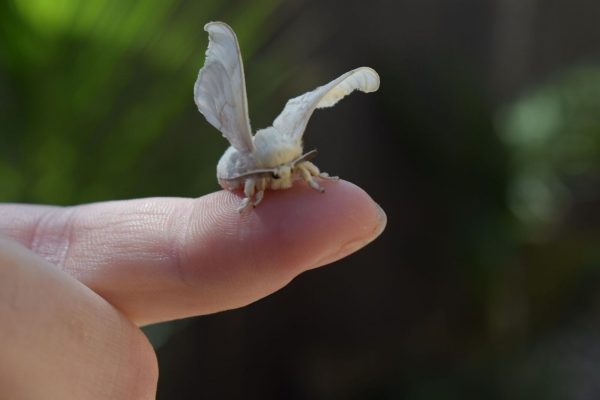Life-Cycle of a Silkworm

The total life-cycle of a Silkworm ranges from 6-8 weeks. Generally, the warmer the weather, the quicker the Silkworm will complete its life-cycle, however, other factors such as humidity and exposure to sunlight are also very important. Ideally, Silkworms will experience 12 hours of sunlight, and 12 hours of darkness per day, a temperature of 23-28 degrees celsius, as well as humidity levels of 85-90%. Under these conditions, your eggs should hatch in a period of 7-10 days. However, it is very hard to achieve these conditions without an incubator, and it is common practice to just make do with the weather in the area in which you live, in fact, here at Everything Silkworms, we do not even use incubators, as they just aren’t practical!
Eggs
In Australia, a Silkworm will naturally hatch in late July to early August – depending on the weather where you live – this time amazingly coincides with the Mulberry Tree regaining its leaves after the tree loses them in Winter. It is recommended that you store all of your eggs in a a cold space (a fridge is ideal) because if there are fluctuations in the weather, your eggs may hatch earlier than expected. When placed in a cold area, you can control when your eggs hatch, therefore ensuring they will always have a food source. If your eggs have been placed in the fridge, they will begin developing and hatch after 10-25 days, depending on the warmth of the weather, with warmer weather causing quicker hatching.
| Eggs | 10-25 days |
| Lava and worms | 20-33 days |
| Pupa | 10-14 days |
| Moth | 5-10 days |
Lava/Cocoon
After 20-33 days of constantly munching away at Mulberry leaves or chow, your Silkworm will feel the urge to cocoon. Lava that are ready to cocoon will be noticeable to the human eye, as they will appear translucent and yellowish in colour. Just before it begins cocooning, the Silkworm will excrete a runny fluid in order to clean out its system and prepare it for the last stage of its life-cycle. It will then ooze a tiny drop of Silk for anchoring, before going on to draw one long, continuous filament of Silk by swinging its head to-and-fro. This process can take up to 48 hours for the Silkworm to fully complete, and the result will be a perfectly ovate cocoon, with one continuous strand of silk up to 1 kilometre long! Inside the cocoon, the Silkworm will moult for the last time, as it approaches the last stage of its life-cycle to become a moth. Sometimes Silkworms do funny things, and this is evident when a Silkworm decides to spin a cocoon with a friend! When this happens, the cocoon will be noticeably larger, however, if the two are members of the opposite sex, sometimes the cocoon does not hatch – and you will open it to find two dead Silk-Moths and a bunch of eggs inside the cocoon!
We need your waste cocoons! We are currently looking to undertake a major project transforming the Australian Silk landscape and we need your help. If you would like more information or if you have spare cocoons and would like to be part of something special please contact us here.
Moth
After 10-14 days of developing into a moth in its cocoon, the Silk-Moth will appear from the cocoon and will excrete a brownish fluid upon emergence – don’t worry, this is completely normal, and is a sign the the Silk Moth is cleaning out its system.
Silk-Moths cannot fly, as a result of thousands of years of domestication, however male Silk-Moths may leave their container/shoebox as they search for a female mate. Some males may be able to almost fly if you drop the from a small height, however it is uncontrolled, and they will hit the ground after a few moments.
It is quite easy to separate the male and female Silk-Moths, with the females having larger abdomens and males possessing smaller abdomens. Males also tend to be more active, as they are constantly searching for a mate. The moth lives a very brief life of 5-10 days, with males generally living longer than Females. Silk-Moths will begin to search for a mate almost immediately after emerging from their cocoon, with some seen mating with a moth of the opposite sex inside their cocoon should two moths share one! After mating, the Female Moth will lay between 300-500 eggs, and die, whereas the male Silk-Moth will search for another mate, should it not be too old.

